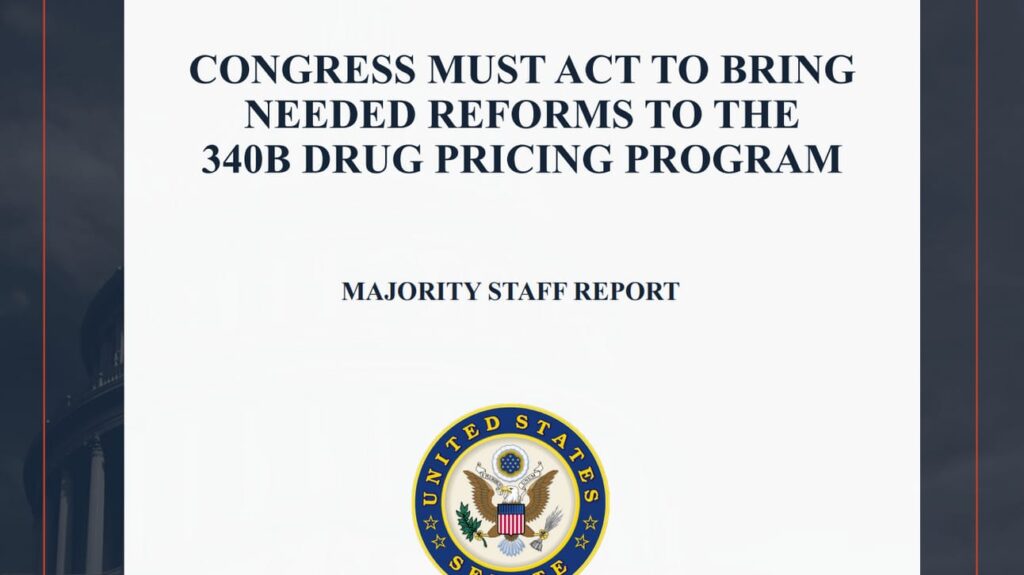If you want to search Cost Curve back issues or link to anything you read here, the web links and archive are online at costcurve.beehiiv.com. You can subscribe there, too.
INFLECTION POINT/ Sen. Cassidy Digs Into 340B, Showing Lots of Dollars, Not a Lot of Impact
My core belief about 340B reform is that there is little need for advocacy. All that’s really required is education.
Anyone who dips their toe into the topic of 340B generally sees, pretty quickly, the abuse that’s going on, which is closely related to the general lack of oversight. The topic might be complex, but there’s not a lot of ambiguity in the problem (or the underlying causes).
Don’t believe me? Take a look at Sen. Bill Cassidy’s fact-stuffed report, out this morning, on the 340B program. It’s going to be a document that gets referred back to forever and ever.
It’s 39 pages that document the underlying truths of the program:
It’s growing out of control.
The whole program is just huge.
Pharma industry countermeasures aren’t slowing the roll.
No one feels much obligation to explain how (or if!) patients are benefitting.
For-profit entities, some controlled by the biggest companies in the country, are making billions.
Community health centers are dangerously over-leveraged on a model that depends on high drug prices.
It’s going to take a long time to go through this, especially the 150-odd pages of the appendix, where redacted versions of all the information that Cassidy’s staff considered. I’m not sure there will be any surprises there, which is its own kind of message: The 340B program is just as screwed up as you thought it was.
I know that you’re all caffeinated and must rush, and that 200 pages of reading might be a tall order. So here are some shortcuts:
The release from Cassidy’s committee is helpful, especially in the summary of the report’s recommendations. Are those recommendations all solid? Absolutely. Do they go far enough? Not even close. But this is probably exactly where we need to start.
I posted to LinkedIn five pullouts from the report that caught my attention. Curious where your eyes went as you looked over the document.
COA has always been ahead of the game here. Here’s their release.
Mark Cuban seized upon the transparency requirements. He’s not wrong: Just giving everyone visibility into claims would be a game-changer.
More on this to come, no doubt. Please flood my inbox with any illuminating reactions you see.
REBOUND/ Trump’s Drug Pricing EO: Reactions Continue to Roll In
President Trump’s executive order on drug prices continues to draw analysis and deeper thinking.
All of the elements of the order are worth considering, though I have to raise the caution that even the most sober assessment here is essentially guesswork, given that it’s difficult to imagine what this administration will be prioritizing next week, let alone 180 days from now.
Yup: here’s the GIF.
Nonetheless, here are some of the pieces you ought to be considering:
Avalere’s takes are always reasoned, and this white paper is no different. One bit that caught my eye: “There is some speculation that the EO may be signaling a shift away from gross costs to net when calculating Medicare’s spend on negotiation-eligible products.”
There are a lot of different deadlines in the EO. “Gee,” I thought to myself. “I should create some sort of timeline to keep those all straight.” But Jennifer Snow beat me to it, so here is her handy clip-n-save reference.
Mark Cuban thinks that the EO creates the scaffolding for serious, game-changing PBM reform. Could we see the administration follow Cuban’s breadcrumbs? I’m not holding my breath, but there is a route to meaningful reform.
Connecticut Senator Richard Blumenthal called the EO “a step backwards” and said he thought that the document signaled a lack of interest in pressing IRA “negotiations.” I’m not sure that’s a particularly fair reading, but it’s an helpful look at how the provisions are playing with at least one Democrat.
QUICK TURNS/ Welcoming to Earnings Season. Which Is Really Ask-About-Tariffs Season
Earnings season this quarter is just going to be endless prognosticating about tariffs. You’ve been warned. There were big names reporting today (Merck, BMS, Sanofi, Roche), with the highlights being that Merck is expecting a $200 million headwind (to hit their costs of goods), and Roche is doing some bilateral tariff negotiation on its end.
Robert Kennedy Jr. will get “grilled” (which is occasionally one of my least-favorite words) by senators next month. I expect it will go poorly.
SHOT: Another European CEO is throwing shade at Europe’s approach to innovation and access. This time, it’s AstraZeneca’s Pascal Soriot. For those with a U.S.-centric POV: Is this the system we want to emulate? CHASER: Endpoints says Chinese biotech is on a tear.
I’m not breathlessly covering briefs filed in IRA lawsuits as often as I would like, which is why I’m glad we have Nyah Phengsitthy to keep an eye on things. Her latest noted that the Trump administration is picking up where the Biden administration left off in terms of defending the IRA. If you want to read the actual filing, it’s here.
For those of you who were really into the STAT story this week on the small biopharma that had to massively hike prices to deal with the impact of Medicaid rebates, Courtney Rice has gone even deeper down the rabbit hole. Great stuff on a truly fascinating move.
Cost Curve is produced by Reid Strategic, a consultancy that helps companies and organizations in life sciences communicate more clearly and more loudly about issues of value, access, and pricing. We offer a range of services, from strategic planning to tactical execution, designed to shatter the complexity that hampers constructive conversations.
To learn more about how Reid Strategic can help you, email Brian Reid at brian@reidstrategic.com.





